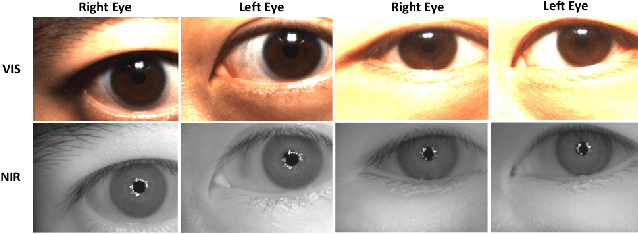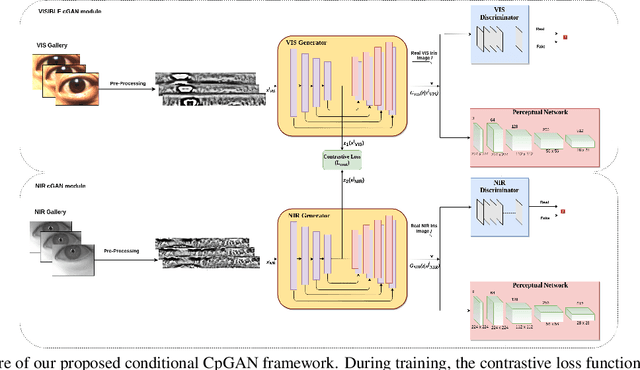Cross-Spectral Iris Matching Using Conditional Coupled GAN
Paper and Code
Oct 09, 2020



Cross-spectral iris recognition is emerging as a promising biometric approach to authenticating the identity of individuals. However, matching iris images acquired at different spectral bands shows significant performance degradation when compared to single-band near-infrared (NIR) matching due to the spectral gap between iris images obtained in the NIR and visual-light (VIS) spectra. Although researchers have recently focused on deep-learning-based approaches to recover invariant representative features for more accurate recognition performance, the existing methods cannot achieve the expected accuracy required for commercial applications. Hence, in this paper, we propose a conditional coupled generative adversarial network (CpGAN) architecture for cross-spectral iris recognition by projecting the VIS and NIR iris images into a low-dimensional embedding domain to explore the hidden relationship between them. The conditional CpGAN framework consists of a pair of GAN-based networks, one responsible for retrieving images in the visible domain and other responsible for retrieving images in the NIR domain. Both networks try to map the data into a common embedding subspace to ensure maximum pair-wise similarity between the feature vectors from the two iris modalities of the same subject. To prove the usefulness of our proposed approach, extensive experimental results obtained on the PolyU dataset are compared to existing state-of-the-art cross-spectral recognition methods.
 Add to Chrome
Add to Chrome Add to Firefox
Add to Firefox Add to Edge
Add to Edge